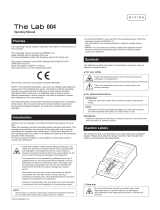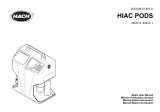
Table of Contents
7
1 Introduction 11
The cobas h 232 meter................................................................................................................. 11
Test principle ..................................................................................................................................... 13
Contents of the Pack ...................................................................................................................... 13
1.1 Important safety instructions and additional information......................................................... 14
Safety information ........................................................................................................................... 15
Disposal of the system .................................................................................................................. 17
Battery pack ....................................................................................................................................... 17
General care....................................................................................................................................... 19
Electrical safety ................................................................................................................................ 19
Electromagnetic interference ...................................................................................................... 20
Touchscreen....................................................................................................................................... 20
Local Area Network: protection from unauthorized access ............................................ 20
Wireless connectivity ...................................................................................................................... 22
Radiofrequency radiation exposure information.................................................................. 22
1.2 Overview of the meter and its accessories..................................................................................... 24
Meter ................................................................................................................................................... 24
Power supply...................................................................................................................................... 27
Test strip.............................................................................................................................................. 29
Handheld Base Unit ........................................................................................................................ 30
1.3 Overview of the Buttons and Icons used on Screen................................................................... 31
2 Putting the Meter into Operation 35
2.1 Installing or replacing the battery pack........................................................................................... 36
Removing the battery pack .......................................................................................................... 37
Installing the battery pack ............................................................................................................ 38
Powering the meter on and off................................................................................................... 41
3 Meter Setup 43
Settings summary............................................................................................................................. 44
3.1 Basics setup ............................................................................................................................................... 49
Contrast ............................................................................................................................................... 49
Language ............................................................................................................................................ 51
Setting the date................................................................................................................................. 53
Setting the time................................................................................................................................. 55
Setting the display options for date and time ....................................................................... 57
Sound.................................................................................................................................................... 59
Auto off ................................................................................................................................................ 62
3.2 Data Handling setup ............................................................................................................................... 64
Connection ........................................................................................................................................ 64
QR Code .............................................................................................................................................. 65
Computer............................................................................................................................................. 68
Printer ................................................................................................................................................... 69
Result memory .................................................................................................................................. 71
Result units......................................................................................................................................... 75
Result display mode........................................................................................................................ 78
Diagnostics......................................................................................................................................... 80
3.3 ID Setup setting ........................................................................................................................................ 82
Administrator ID ............................................................................................................................... 83
Operator ID......................................................................................................................................... 89
Patient ID............................................................................................................................................. 93























